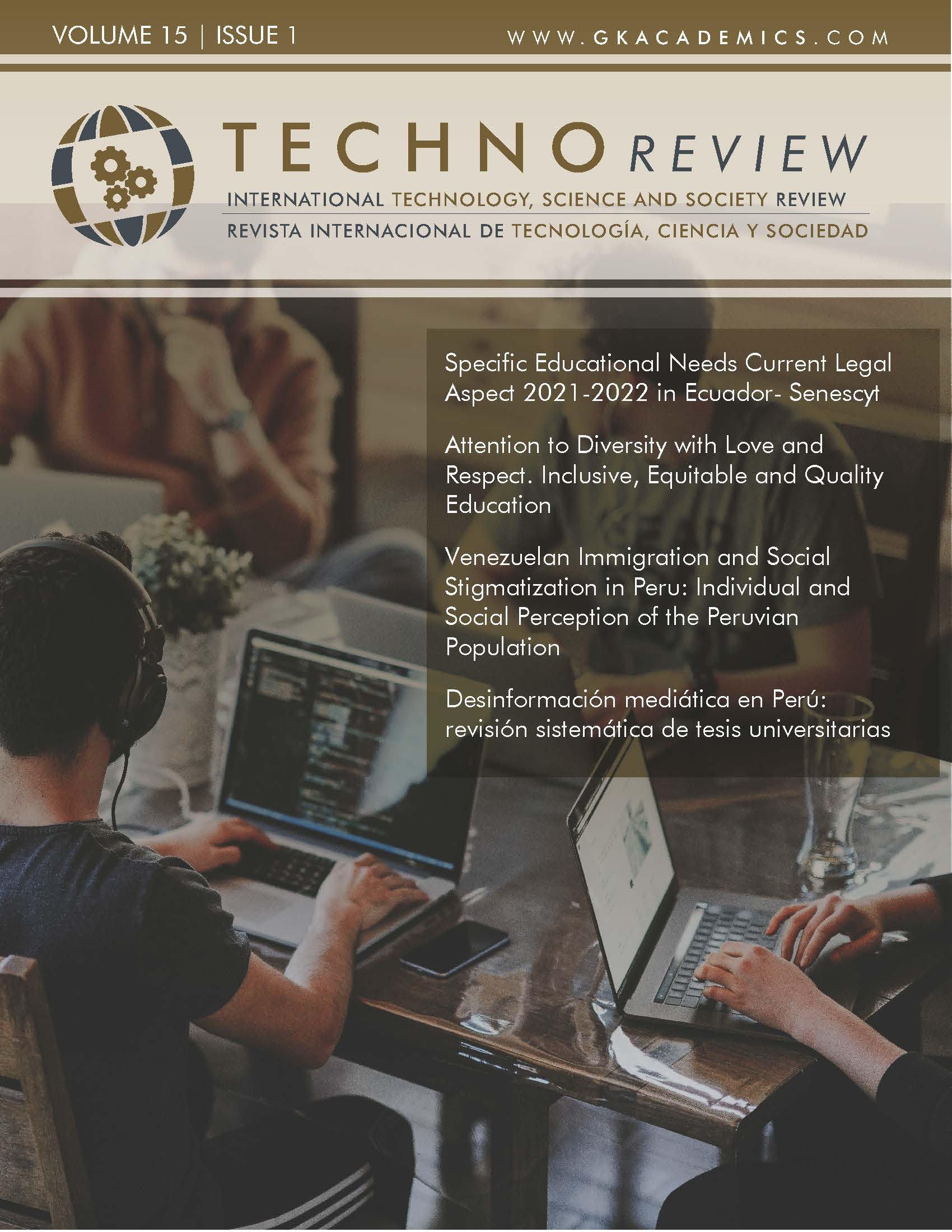Augmented Reality For Learning Children With Asd Software Usability Evaluation With Heuristic Rules
DOI:
https://doi.org/10.37467/revtechno.v15.5092Keywords:
Augmented reality, Autism, Education, TEAAbstract
The objective of this research is to develop an augmented reality mobile application for learning mathematics and reading for children between 5 and 7 years of age who suffer from autism spectrum disorders. An own methodology for the development of the mobile application is presented and as results the finished mobile application is shown, which was evaluated by the tutors of the autistic children. 90% of the tutors affirmed that augmented reality facilitated educational understanding, 80% assured that learning through augmented reality applications is more attractive for children and finally 90% affirmed that they would recommend the use of the mobile application to tutors with similar situations.
References
Alcalá, G. C., & Ochoa Madrigal, M. G. (2022). Autism spectrum disorder (ASD). Magazine of the Faculty of Medicine (Mexico), 65(1), 7-20.
Alonso, J. R., & Esquisábel, I. A. (2020). Autism: Reflections and guidelines to understand and address it. Shackleton books.
Arias Oropeza, D. (2022). By your side: Development of a study to follow routes through the use of interactive technologies in children with grade 1 ASD who need contextual independence. CONACYT NATIONAL REPOSITORY.
Escobar Benites, S. (2023). Social cognition in the neuropsychological assessment of autism. Case study. Psychology Magazine (PUCP), 41(1), 31-54.
Fernández Suárez, M.P., & Espinoza Soto, A.E. (2019). Mental health and interventions for parents of children with autism spectrum disorder: a narrative review and the relevance of this topic in Chile. Psychology Magazine (PUCP), 37(2), 643-682.
Fletcher‐Watson, S., McConnell, F., Manola, E., & McConachie, H. (2014). Interventions based on the Theory of Mind cognitive model for autism spectrum disorder (ASD). Cochrane database of systematic reviews, (3).
Fletcher-Watson, S., Petrou, A., Scott-Barrett, J., Dicks, P., Graham, C., O'Hare, A., ... & McConachie, H. (2016). A trial of an iPad™ intervention targeting social communication skills in children with autism. Autism, 20(7), 771-782.8.
Fombonne, E., Marcin, C., Manero, A. C., Bruno, R., Diaz, C., Villalobos, M., ... & Nealy, B. (2016). Prevalence of autism spectrum disorders in Guanajuato, Mexico: The Leon survey. Journal of autism and developmental disorders, 46, 1669-1685.
Gandía-Abellán, H., Nieto, C., & Márquez-González, M. (2020). Intervening in significance: effectiveness of a pilot program in improving the emotional well-being of parents of children with autism spectrum disorder. Behavioral Psychology/Psicologia Conductual, 28(2).
Golan, O., & Baron-Cohen, S. (2006). Systemizing empathy: Teaching adults with Asperger syndrome or high-functioning autism to recognize complex emotions using interactive multimedia. Development and psychopathology, 18(2), 591-617.
Grantham, C., Jarvis, D., & Linstead, E. (2017). An Evaluation of Educational Software for Children with Autism Spectrum Disorder. Computers in Human Behavior, 74, 81-90.
Gutiérrez-Ruiz, K.P. (2019). Early characteristics and predictors of the severity of the clinical picture in autism spectrum disorder. CES Psychology, 12(2), 12-25.
Hourcade, J. P., Williams, S. R., Miller, E. A., Huebner, K. E., & Liang, L. J. (2013, April). Evaluation of tablet apps to encourage social interaction in children with autism spectrum disorders. In Proceedings of the SIGCHI conference on human factors in computing systems (pp. 3197-3206).
Hourcade, J., Williams, S., & Miller, E. (2018). Using Tangible User Interfaces to Support Social Communication in Children with Autism Spectrum Disorder: A Systematic Review. Journal of Autism and Developmental Disorders, 48(5), 1619-1634.
Maldonado, L. (2020). Technology and education: resources for people with learning difficulties, intellectual, motor, visual and hearing limitations. Editorial Byblos.
Martínez-González, A. E., & Piqueras, J. A. (2019). Differences in the severity of Autism Spectrum Disorder symptoms according to the educational context. European Journal of Education and Psychology, 12(2), 153-164.
O'Reilly, M., Lancioni, G., & Sigafoos, J. (2007). Interactive Computer Technologies for Persons with Autism. Focus on Autism and Other Developmental Disabilities, 22(1), 3-14.
Parsons, S., Leonard, A., & Mitchell, P. (2006). Virtual Environments for Social Skills Training: Comments from Two Adolescents with Autism. . Computers & Education, 47(2), 186-206.
Turpo Gebera, O., Aguaded Gómez, I., Barros Bastidas, C. Media and information literacy and teacher training in developing countries: the case of Peru, (2022) Universidad y Sociedad, 14 (2), pp. 321-327. rus.ucf.edu.cu/index.php/rus
Zúñiga, A. H., García, N. M., Peña, M. S., & Santos, L. S. (2020). Autism spectrum disorders. PEDIATRICS, 325, e1.
Downloads
Published
How to Cite
Issue
Section
License
Those authors who publish in this journal accept the following terms:
- Authors will keep the moral right of the work and they will transfer the commercial rights.
- After 1 year from publication, the work shall thereafter be open access online on our website, but will retain copyright.
- In the event that the authors wish to assign an Creative Commons (CC) license, they may request it by writing to publishing@eagora.org







